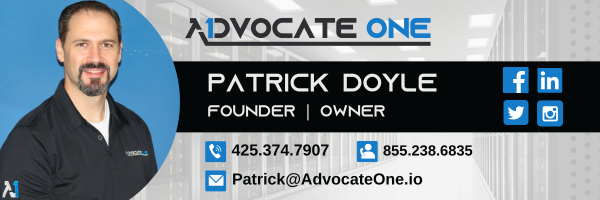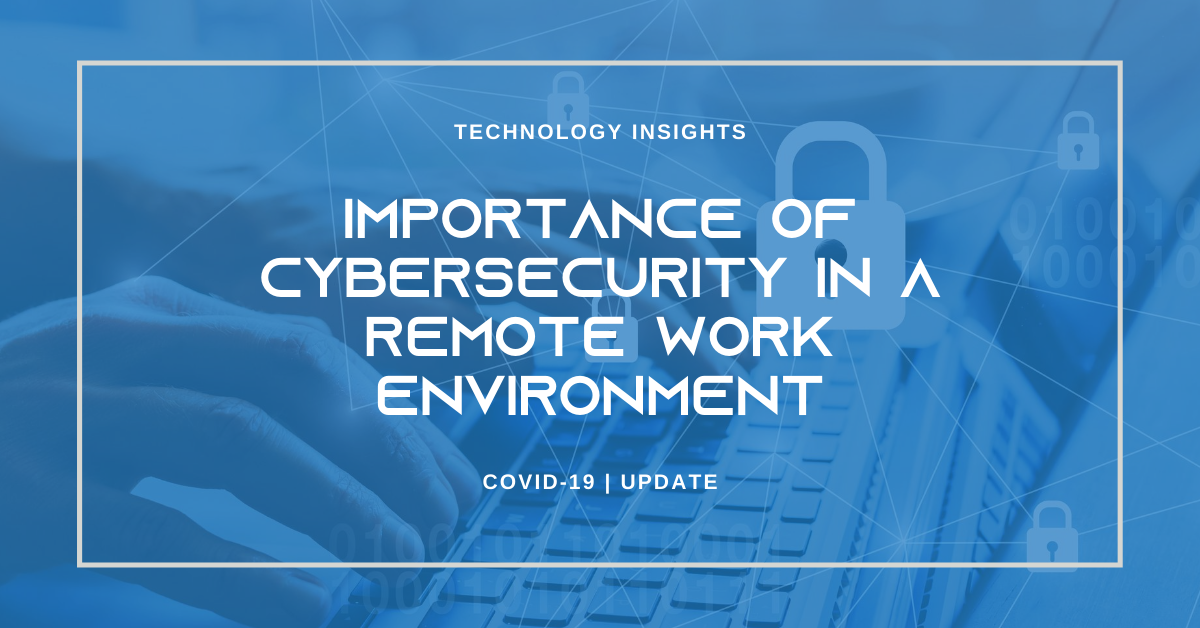Working remotely in the U.S. has been on the rise for several years. In 2015, 3.9 million people in the U.S. worked remotely. With the COVID-19 health crisis changing the work environment for many, 16 million people are now working from home, according to a April 2020 Slack survey. While this does provide a safer work environment for many during the pandemic, it does open the door to an increase in cybercrimes. Now more than ever, keeping the digital workplace secure is important.
Cybersecurity Risks Rising
The switch to a remote environment has helped protect workers from being exposed to the COVID-19 virus, however, the uptick in the use of meeting apps such as Zoom, brings a host of other threats. For example, Google Chrome just confirmed that two potential security breaches could expose an estimated 2 billion people around the world.
Many remote employees prefer to use their personal devices on home or public Wi-Fi as opposed to corporate-issued equipment with the company’s network, which leads to a host of new vulnerabilities. Personal or public Wi-Fi networks usually do not have as strict of security protocols so it is easier to be exposed to threats. Data being transmitted between two parties can be intercepted or even altered.
Most employees simply do not realize the potential harm they can cause by not securing their network. For instance, forwarding an email from work and then printing it at home can comprise a company’s whole network. To avoid situations like this, employees should be trained on best practices while working remotely. When all employees use these best practices and are cognizant of when and where they are accessing work information, then the risk for a breach or threat decreases significantly. With many employees not returning to their offices anytime soon, the gaps in security must be eliminated so data remains secure.
What About Security in Cloud-based and SaaS Solutions?
Every cloud-based provider has its own protocols when it comes to cybersecurity. Companies must trust that the vendor will keep the data security. Recent security breaches with popular cloud providers have caused a certain sense of anxiety when it comes to trusting these applications are 100% secure. Cloud providers are responsible for providing secure platforms, servers, networks, systems, and applications but they are not responsible for data security. That part is up to the users.
What can a company do to ensure security when using these platforms? There are several steps that organizations can take to decrease their vulnerability online. Companies need to update their security practices regarding their cloud platform usage. For example, data encryption, identity and access management (IAM), mobile device management, and monitoring can increase security confidence.
IT departments should choose a cloud-based platform of SaaS that integrates easily with the existing infrastructure. The platform should be on a safe could server with proper security certifications. The provider should ensure data privacy while allowing control over user rights and access. It is the responsibility of IT to make sure that the process works correctly, especially with remote employees. The zero-trust security model can help in this instance.
What is the Zero-Trust Security Model?
Often times, companies have used a trust-but-verify model when it comes to security. With an increase in the number of employees working remotely however, this approach is not quite sufficient. Strong passwords and multi-factor authentication are not enough when it comes to potential cyber-attacks.
The zero-trust model is exactly that—do not trust anything, always verify everything. All resources are considered external and traffic must always be authenticated.
Under this model, there is no data within or outside of a company’s security that is trusted. Every application and device must be authenticated within every session or action. And the minimum number of permissions are given to an employee to get the job completed so no user has access to information that does not pertain to their job.
However, this does not have to become a burden for the user to log in for every action they need to complete. Instead, IT can create a better user experience under the zero-trust model by utilizing the following:
- Endpoint detection and response (EDR) technology
- Unified endpoint management (UEM) solutions
- Virtual desktops
- Data loss prevention (DLP) technology
- Multi-factor authentication (MFA)
- Condition-access policies
Many companies will need to acquire a new set of IT tools (and possibly an additional budget). Depending on the current state of their security protocol, it could mean a complete IT migration process.
Managed Security Operations Solutions
If this sounds like an overwhelming undertaking, there are service providers that offer Security Operations Center (SOC) solutions and provide zero-trust security services. A SOC within an IT department is usually not cost-effective because of the fees for the tooling and acquisition of cybersecurity specialists. A SOC by an outside provider can be more affordable with a monthly subscription service.
A SOC-as-a-Service can enforce the zero-trust model and offer cybersecurity tools and security engineers that will be able to detect threats in real-time. It gives protection 24/7 from ransomware. Companies with remote employees will be better able to makes sure they are in compliance with policies.
Security is not something that your company can afford to make mistakes with, as they could end up being costly. Contact us today to find out how we can increase security in your workplace.
Your Trusted Technology Partner
Advocate One is a results-driven technology provider that focuses on delivering voice and data solutions for small businesses. Our mission is to provide an unmatched customer experience backed by top-notch IT support, enabling clients to better focus on their core strengths and services.
Find out how Advocate One can make your business more productive, your systems more secure, and your tech-related stress minimal. Feel free to get in touch with us; we are here for you!



